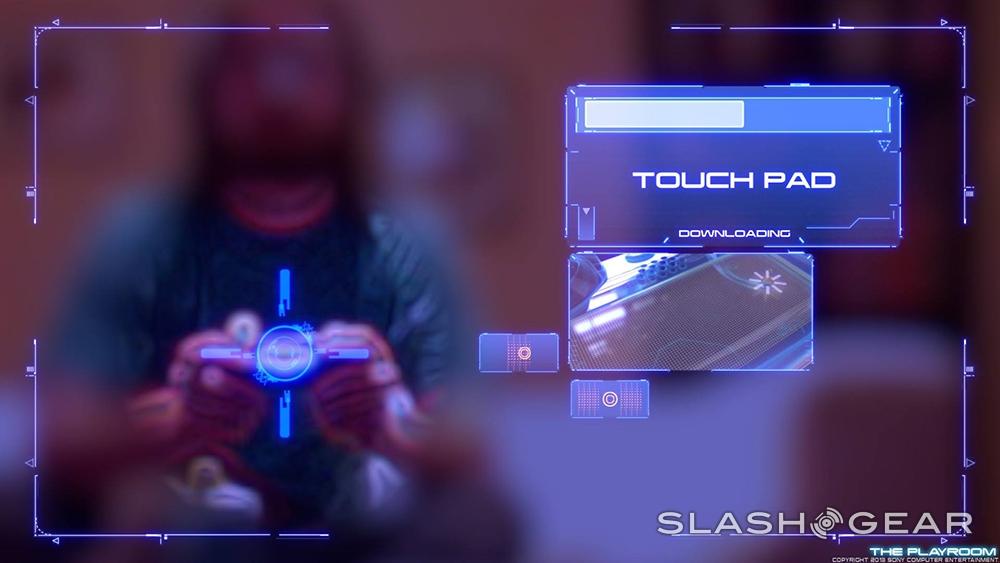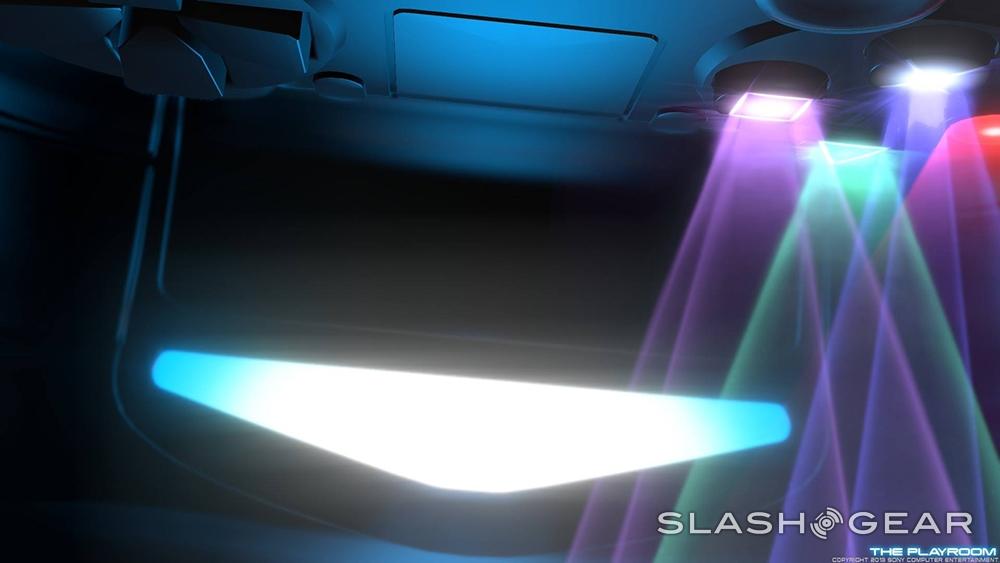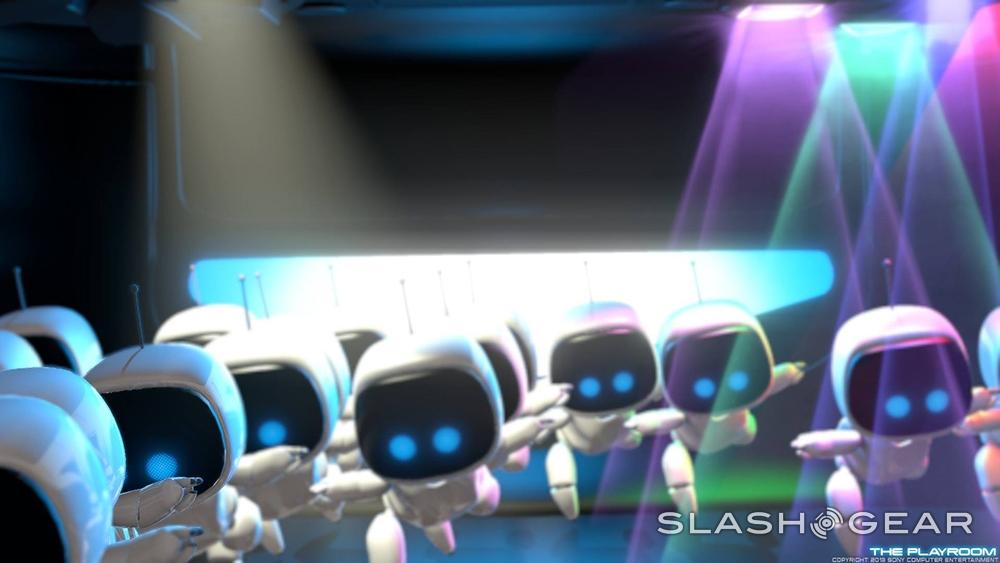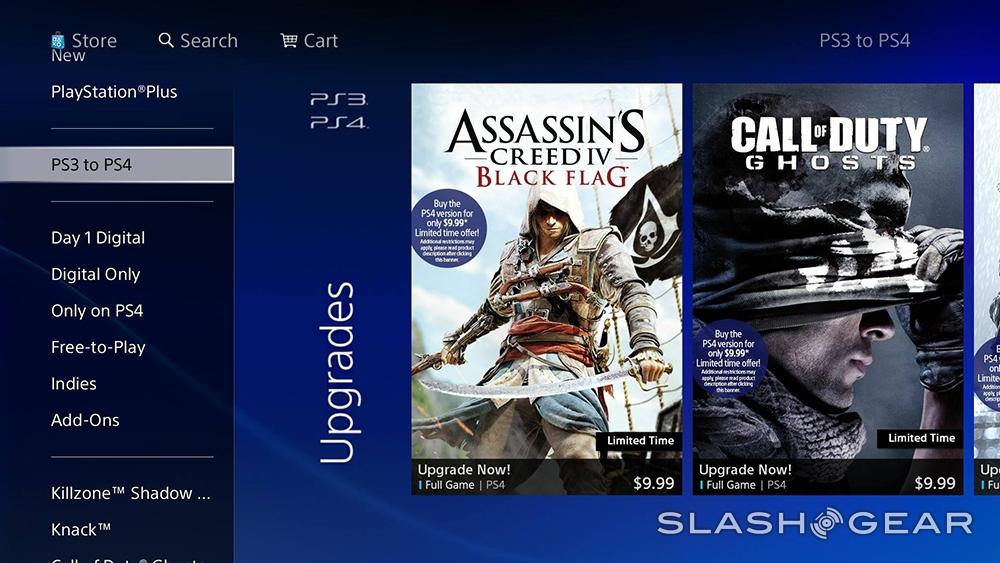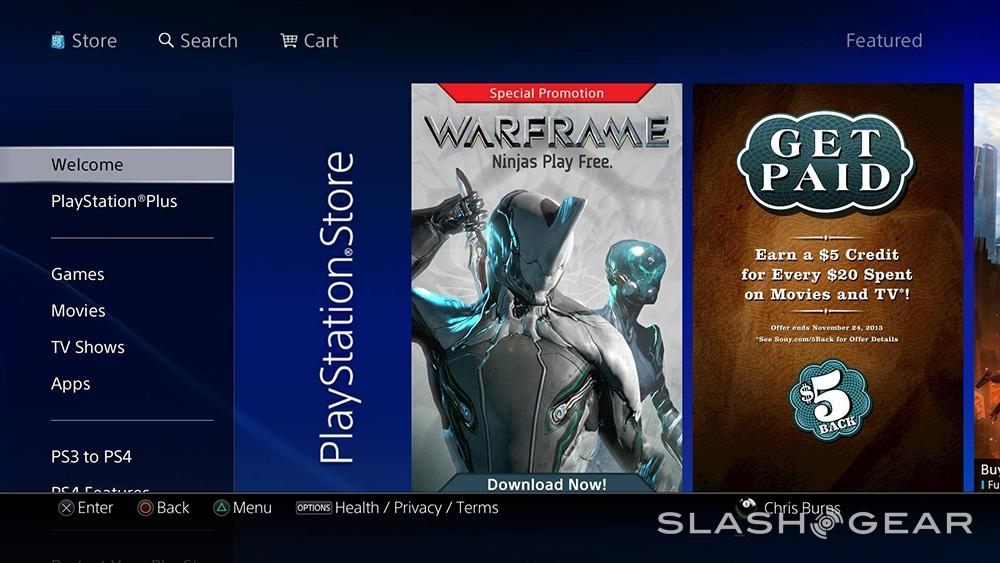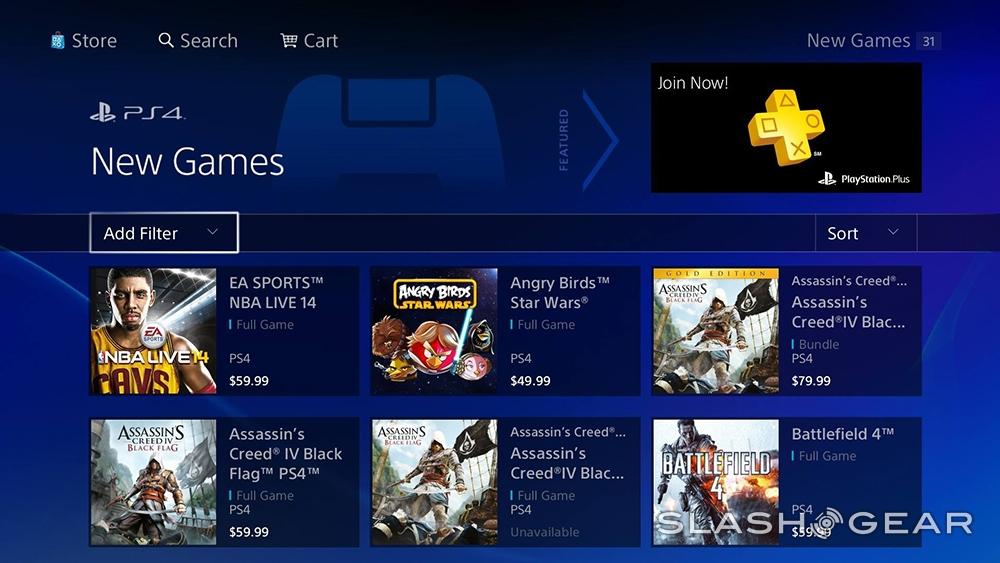PlayStation 4 Review
Sony's message this generation is clear: the PlayStation 4 is here to command gaming in the living room. The company does away with any large amount of distractions in all-encompassing entertainment coverage and heads straight and true for the living room-based universe of console games. While you'll be able to work with a variety of ways and means for using the PlayStation 4 in non-traditional senses, here Sony continues its drive for purity, for better or for worse.
Hardware
The PlayStation 4 is a considerably lighter device than it looks, coming in at 2.8kg or 6.1-pounds. This makes the device easy to move around in your home and transfer from location to location if you're the mobile type. While we've got no worries about the PS4's ability to withstand day-to-day odd bumps and inadvertent hits in the home, part of this lightness is due to relatively thin coverings. If you're planning on traveling with the PS4, we'd recommend keeping the original box and its tough packaging.
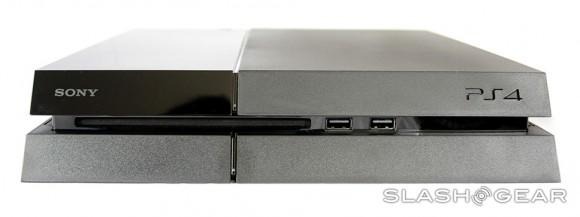
Inside the box that contains this first iteration of the PS4, you'll find the console itself, a single HDMI cord, one DualShock 4 controller, a USB cord for charging the DualShock 4 through the console, and a power cord for the console. The packaging here is light and lends itself to easy disposal if you'd like to get it out of the way on day one.
The reason there's no bulky power supply in this box is that it's included inside the console itself. This allows the user to stay as minimal as possible in their console setup – you'll only need to run the HDMI cord and power cord from the back of the console at minimum.

Along the back of the PS4 you'll find a collection of ports: one each for power, ethernet, optical, HDMI-out, and an AUX port. This AUX port will be used for the official PlayStation 4 Camera by most. This simplicity may prove to be a hinderance for users choosing their next-generation gaming console based solely on hardware connection diversity, but we've found no reason compelling enough yet to suggest a whole lot more.
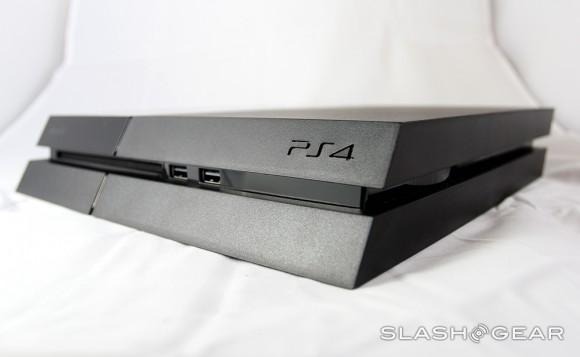
Up front of the PS4 console you'll find two USB 3.0 ports that are used for a variety of reasons, but primarily (for now) for charging up the DualShock 4 controller. This console adds the tiny (but significant) ability to charge its own Bluetooth controllers up while it remains in standby mode – rather helpful.
There's also a slot-loading DVD/Blu-ray drive up front near two touch-sensitive hardware buttons. These buttons are essentially invisible until you get up close and personal with the PS4, revealing themselves only then to control the eject function and the console's power.
The industrial design of the PS4 is one that's both literally and figuratively sharp. This console is designed to disappear. It's also designed to stand out – if that's your cup of tea. It's just a black box if you'd like to hide it amongst stacks of books (it's got flat sides, after all), but it's also able to appear as a sleek work of art aside your television if you want it to.
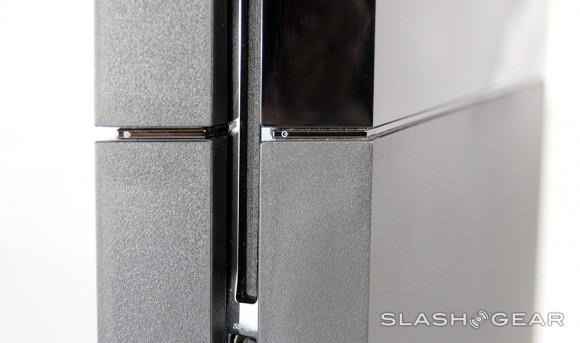
A glowing light appears cutting the PS4 in two, this light appearing when you first start the machine up in a breathing blue. Once the machine is in action, you'll find the light along its body a bright white, and in standby you'll find it orange.

If we had our choice of settings, we might recommend the option of turning this light off when we're not just initializing the unit. Then again, there's always the option of putting a friendly textbook on top of or beside the unit for blocking it out. We've got a similar suggestion for the DualShock 4 – it too has an endlessly lit light on it.
The PS4 console has an array of air-holes hidden along its sides allowing a flow that remains open regardless of the position of the machine. We've not yet had any issues with overheating and indeed have not heard much more than a peep out of the hardware itself for running noise. While the machine has gotten what could be described as "a bit warm" when running for extended periods, it's never gotten hot. We'll see how this continues over the life of the console.
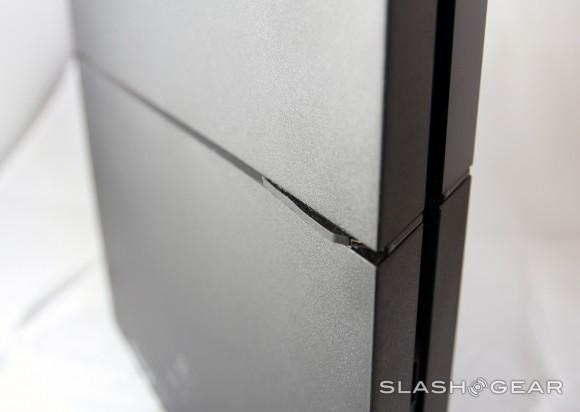
Along the bottom (the larger bottom, landscape-wise) of the console are two rubbery bumpers. These bumpers allow the machine to rest easy and stay in place in your average relatively-flat environment. You'll also notice that the whole package is quite fingerprint-prone – we'd only call this a negative if it we planned on showing the console itself off regularly. Since we don't plan on staring at the machine for extended periods, fingerprints aren't really an issue.
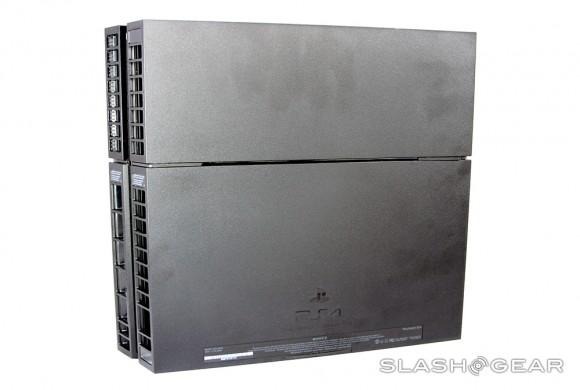
Inside you'll find a single-chip custom processor manufactured by AMD with an 8-core Jaguar CPU with 1.84 TFLOPS AMD Radeon GPU (Graphics Core Next engine). This system is backed up with 8GB of GDDR5 RAM for the long-haul. Thus far in as concise a way as we can make it: the processing power of this unit is well prepared for the next generation of games.
We'll be using this same processor for the next several years. Compared to current change-outs and upgrades in gaming PCs these days, that's almost blasphemous to think about. Sony and AMD have a task here that we're excited to see unfold: to keep pace with the gaming PC universe while they keep the same hardware year after year.

For now, they appear quite prepared to take on any task developers have set for them. Games appear to be as good as the best seen on the PlayStation 3 and better – as one would hope – and we're expecting a whole lot more in the immediate future.
One let-down in the hardware department thus far as been the wireless connectivity for data. Inside the PlayStation 4 you'll find support for 802.11b/g/n at 2.4Ghz, while 802.11ac and the 5GHz future are not supported as such. While downloading games with Wi-fi only, we were met with a message that we'd timed out – we'll only be using ethernet from here on out.
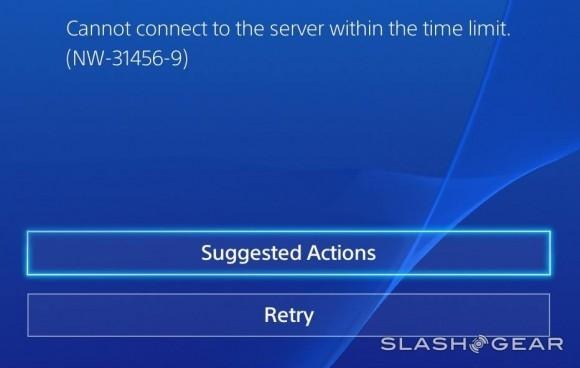
The possibility of 3rd party Bluetooth peripherals remains alive as it's merely a software update Sony would have to release. For now you'll be able to connect devices like a Bluetooth mouse or a Bluetooth keyboard, but only if they do not require a special dongle to do so.
Bluetooth Audio support is missing altogether, but you will be able to connect just about any pair of wired headphones to the DualShock 4. Every pair of headphones we've worked with thus far has sounded spectacular connected to the controller, in fact.
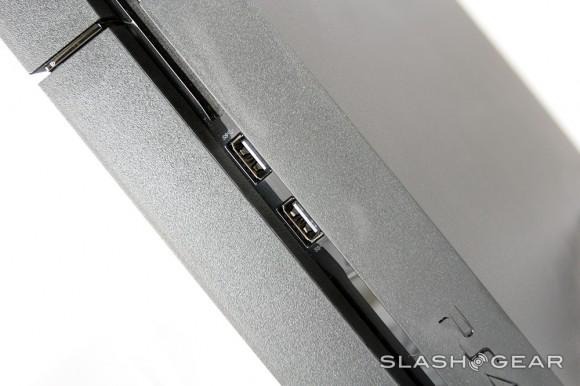
Of note is the fact that connecting a standard 1/8-inch headphone jack to the DualShock 4 disables audio elsewhere. While you'll be able to hear that audio from your headphones or earbuds just fine, the PS4's HDMI audio and optical out audio are disabled at that point. Disconnecting the headphone jack results in audio returning to HDMI/optical within moments.
On the heat and noise front – we've heard reports of overheating and relatively noisy systems here and there, but it would appear that they all came before the 1.50 software patch. We're not completely solid on that suggestion, but our review sits solidly inside the V.1.50 and V.1.51 environment.
The only time we've heard any noise that was bothersome was in the first loading of a disk-based game, which very quickly subsided. Heat appears to be a non-issue in our review unit for now – again we'll be keeping an eye on this especially key point over the months (and years).
PlayStation 4 Camera
The PlayStation 4 Camera comes in at around the size of a large Tootsie Roll, at 186mm x 27mm x 27mm (width x height x depth). This camera isn't going to be used for ultra-HD broadcasts, by any means, with a current maximum resolution at 1280 x 800 pixels in each of its two forward-facing shooters.
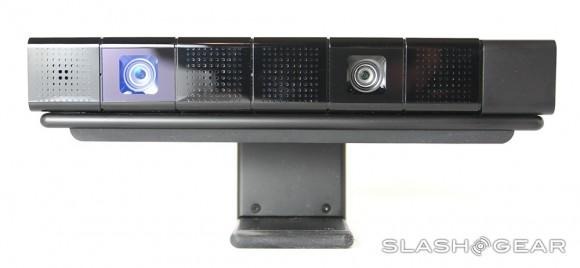
Where the camera will become impressive – eventually – is in its set of speeds, anywhere from 60FPS to 240FPS (with a much smaller display size at 320 x 192.) These cameras were made to track you, not to take your photo for Facebook. You'll find both cameras to work with F/2.0 fixed focus and a capture range from 30cm to infinity, with a field of view at 85 degrees. There's also a 4-channel microphone array for listening in on your basic commands.
There's not a whole lot you can do with the PlayStation 4 Camera at the moment. It's a brand new system, and it would appear that no major developer has decided to grab hold of official camera support right out of the box. Sony, meanwhile, has taken it upon themselves to make the one demo called "The PlayRoom" as attractive as possible for prospective buyers and new users alike.
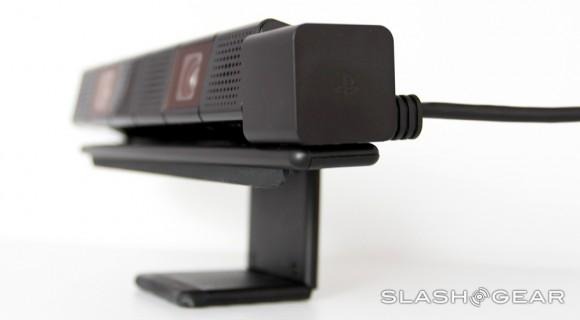
Inside The PlayRoom you'll have the opportunity to play with a number of augmented reality robots. These robots show off the abilities of the DualShock 4's connection to the PlayStation 4 Camera with ease – here you'll find a glimpse of things to come as well as an endless source of entertainment for your 2-year-old.
What this all comes down to – for now – is a camera array that isn't quite as advanced on the surface as the Xbox One's Kinect, but comes away as having a load of potential for the immediate future. It's certainly entertaining to see the virtualized insides of the DualShock 4 for now, anyway.
DualShock 4
In the DualShock 4 you've got the most well-refined game controller we've ever laid hands on. The DualShock 4 uses the previous several generations of controllers in the PlayStation line to create a machine that's not too heavy, not too light, not too bulky, and not too compact.
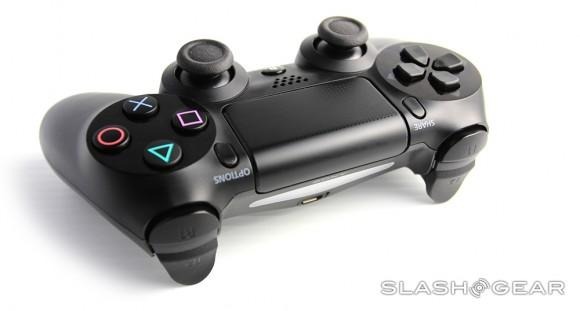
With a weight at 210g, you can hold the DualShock 4 all day without getting tired while still feeling like you've got a high-end piece of hardware in your hands. You've got a mix of smooth and textured plastics throughout that lend themselves to a mix that's excellent for standard gameplay situations of all kinds.
In the center there's a PS button, where you'll never accidentally press it. The same is true of the Share button and Options button, placed to the sides of the controller's center where your fingers rarely need to go. Even accidentally tapping these buttons happens rarely as they've got a bit more resistance to them than the rest of the bunch.
The directional buttons and action buttons feel perfect – classic and refined at once – while the R1/L1 R2/L2 buttons have been revamped to conform to the shape of your trigger fingers. These trigger buttons have all become far more natural feeling and not at all out of the way as they may have in the past.
Based on our experience with the Sony Camera experience first, then inside the few games that already make use of it, the six-axis motion sensing system is top notch. Inside the DualShock 4 you've got a three axis gyroscope and three axis accelerometer, both of them creating an instant and real motion system that's solid.
Vibration in the DualShock 4 feels a lot more smooth than the original arm-rattling beasts, while the built-in mono speaker is certainly loud enough for dedicated play.
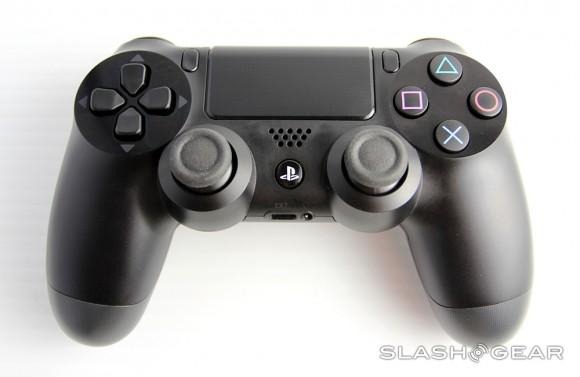
You'll be connecting to the PlayStation 4 with the DualShock 4 using Bluetooth 2.1 + EDR. This means you've got 100 meters of connection if you really want to push it, but it also means you're not working with the newest in new Bluetooth 4.0 LE (Low Energy). At the moment we're finding the DualShock 4 to get upwards of 8 to 8.5 hours of straight gameplay, while standby time seems to last several days at least.
The touchpad in the center of the DualShock 4 is certainly going to appear as the biggest point of contention amongst gamers across the board. Using it in any UI with extended movement we find we'd rather use a mouse. Just as it was difficult turning from a mouse to a touchpad on a notebook computer back in the day, so too is it difficult to switch to this pad.
While a touchpad on a laptop computer is set under your thumb, the touchpad on the DualShock 4 requires a sort of reach upward. The developers behind the game Killzone Shadow Fall have taken hold of this piece of hardware most effectively: a quick swipe up, down, left, or right for selections.
Software: User Interface
When you first open up the PlayStation 4 there's a 10-20-minute setup process facing you. This includes time to download and load whatever software patch you're up to at the point you've purchased the device – we're up to 1.51 when this review is first published. In all it's a painless process unless you've waited weeks in line to purchase the console itself.
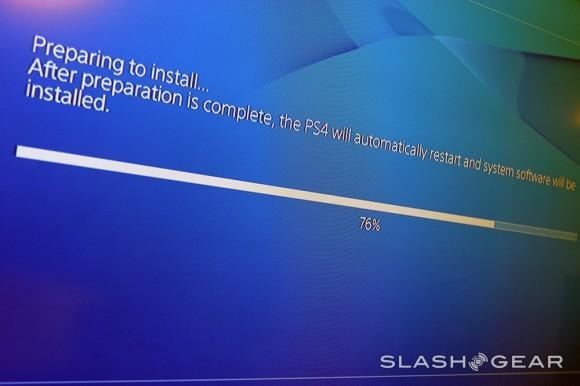
You can set up your own profile if you like to save games and settings, or you can choose to log in as a guest, where logging back off erases any progress you've made. Once you've begun a profile of your own, it becomes tied to the DualShock 4 you're using. This tie is not undoable – you can still choose any profile from any controller – but it's a nice touch.
If you're using a PlayStation 4 Camera, you can also log in by sight. Once you've picked up a DualShock 4 and the log-in screen appears, the camera begins searching for familiar faces. If the camera sees you and you've made a profile with the camera in-tow, you'll be logged in automatically.
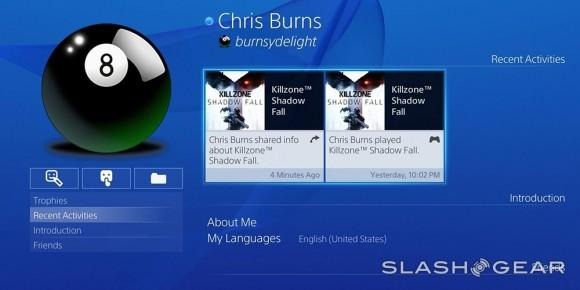
Once logged in, the PlayStation 4 is able to show you a fully personalized experience. This goes beyond trophies and recent activities – you've got personalized suggestions for new games and viewing material in the PlayStation Store. You can also temporarily log-in to a friend's PlayStation 4 and fully log out (and delete it) once you're done. The whole sign-in process and personalized experience in the PlayStation 4 is friendlier than it's ever been, and it's simple, too.
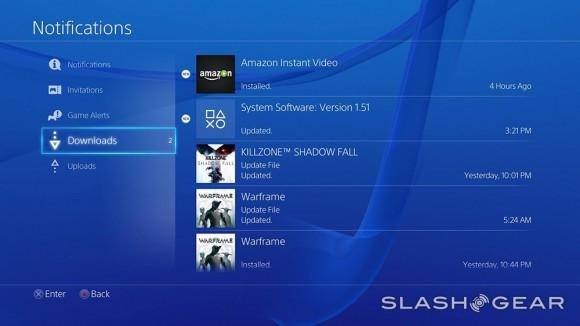
While the PlayStation 4's menu system is a bit easier to understand than that of the original release of the PS Vita, there are some oddities that stand out. Supposing you want to check on a download that's occurring in the background, for example. To see download progress, you must move upward to the UI's first sub-menu then move to the right to Notifications, tracking downward through the menu until you reach your goal.
Smart moves here include the ever-changing long-list of titles of the main menu, evolving over time based on game and app use. The titles you've most recently worked with are all the way to the left (where you start), while the apps and games you rarely use end up being pushed to the right. While we've seen some harsh criticism of this system by some reviewers, there seems to be a rather simple reasoning for it to us.
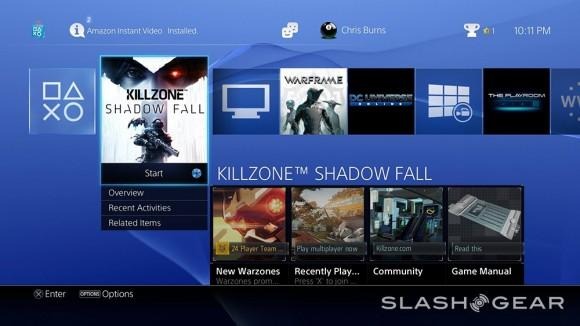
The average PlayStation 4 user will likely cycle through only a few titles – apps and games – at a time. If you open a PC or your smartphone, you've got the option of creating a page of your most-used apps and games: the PS4 simply does that for you.
Logging in to the PS4 isn't going to be about cycling through news apps, Twitter, email and the like. It's going to be about waking up a gaming console to access a game – more than likely the game you've played most recently. It is all simplified as such.
The PlayStation Store isn't quite as intuitive an approach. Sony may simply be suggesting that you're more likely to learn about new games through social media outlets and blogs, but we'd like to see a better game and app discovery engine in the future. At the moment it's all a moot point since there's not a vast abundance of either kind of software in the store anyway.
UPDATE 1/29/2014: It's become apparent especially after long periods of time with a radically different user interface implemented on the Xbox One why Sony's space here is superior – simplicity. While we're generally acclimated to seeing more than one element on a screen constantly on a desktop computer, smartphone, or tablet, here Sony proves that less is far easier on the eyes. While we've found working with the Xbox One's UI over long periods of time can be headache-inducing, PS4's UI – cool blue, mid-tones, one row of icons, simplicity, keeps things easy enough to handle at living room distances.
Software: PlayStation Network
The PlayStation Network appears to be the center point at which Sony will earn cash through the PlayStation 4 in the future. While it's been suggested that the company makes very little on the hardware itself, the PlayStation Network charges a standard annual fee for users to play multiplayer games on the console.
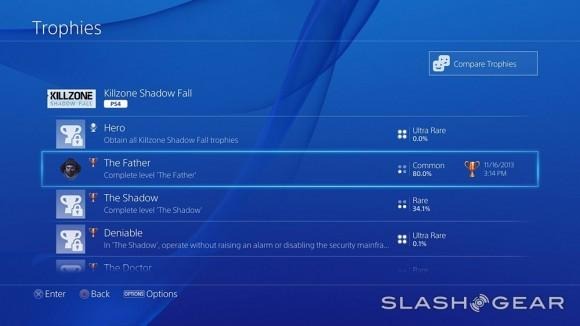
You will not be able to play games with other players online with the PlayStation 4 without paying for the PSN. While this does mean a monthly or yearly fee, Sony is already beginning to support the idea of buying in to the system with free access to some unique games.
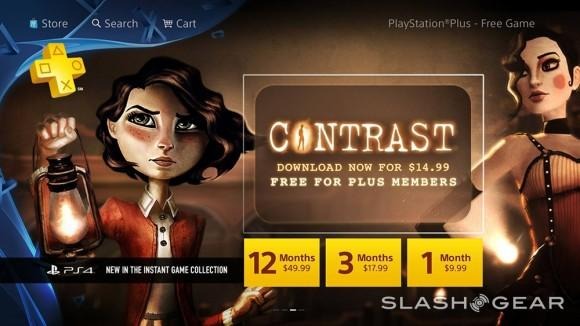
The PlayStation Network adds to the timeline system that is "What's New" on the PS4's launch page. Here you've got a stream of updates from friends online and their activities as well as notes from Sony itself whenever there's need for a news blast.
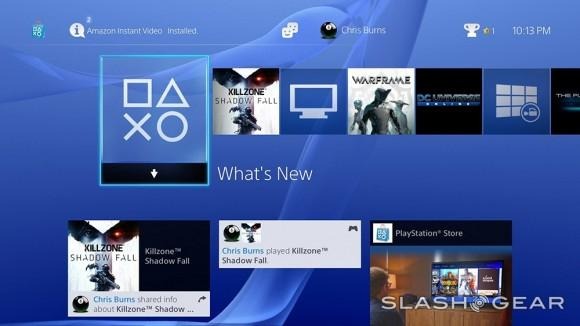
This What's New stream of information is generally organized by time, looking a lot like some of the more popular online social networking systems such as Google+ or Pinterest. This can be good if you're a lover of massive amounts of information – it can conversely be bad if you're a fan of logging on to only the information you're interested in.
At the moment there's a similar situation with the PlayStation Network and Friends. If you've got a massive amount of friends on PSN, you'll have one massive (unorganized) set of names appearing at once when you want to browse through them. We're expecting some organization and filtering tools in the near future.
Software: Apps
You'll be instantly rolling with the likes of Netflix and Hulu+, and the user interfaces for both systems are far better than we'd expect on a launch system. This is of course due to both networks having worked with consoles before – they're making certain that they are well represented from the get-go here with Sony's next generation.
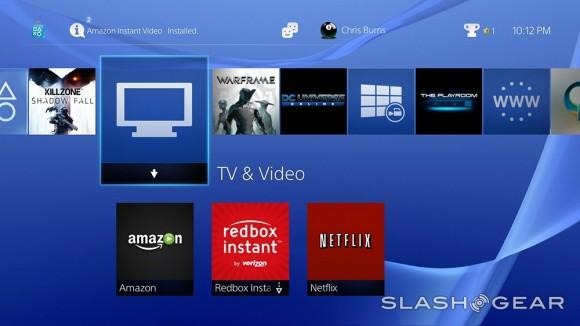
Surprising here is the lack of any real open video networks other than Twitch. We've gotten so used to being able to use YouTube or Vimeo anywhere that there appears to be an empty spot that, at the moment, can only be filled by heading to the dedicated web browser for the PlayStation 4.
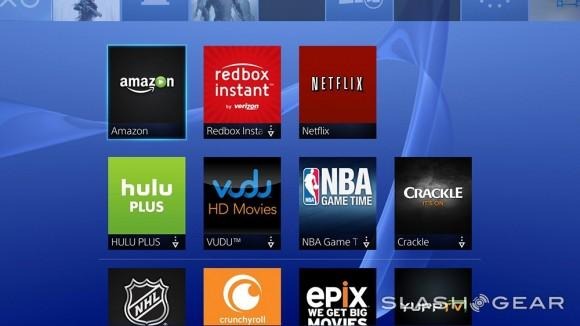
Unfortunately, that web browser could use a lot of work. Using the touchpad on the DualShock 4 often had us clicking where we did not want to click and scrolling with little success. We must also assume that the basic internet browsing interface wasn't a place Sony was especially keen to place a lot of effort initially here on the PS4.
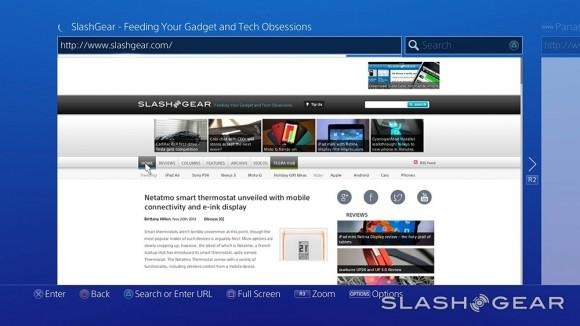
Twitch integration and the viewing of and streaming of game content seems – on the other hand – to have been a bit part of the initial focus for the launch of the PlayStation 4. While streamed videos could at times be a bit difficult to handle with their end-product as viewed on the web, we had a lot of luck viewing and participating with users streaming from their systems.
Using Twitch and UStream – but mostly Twitch – to share and view gaming content with the PlayStation 4 is a feature we've had great luck with thus far in how consistent the experience has been.
The PlayStation App for iOS and Android has been a satisfying prospect so far as well. Connecting a smartphone to the PlayStation 4 allows us to feel like we're involved on a level we simply wouldn't be without the pocketable link.
That said, the PlayStation App connection to the PlayStation 4 has been just a taster of sorts, leaving us to want more from the experience. While the prospect of viewing one's PSN statistics and downloading games remotely is neat for the moment, we'd also like to see more integration with instant changes of video and sound settings in the future.
Software: Games
Our initial review is released here when the console is less than a month old. While we're just past the "launch title" group and beginning to see "first releases", there's still a relatively paltry family to look at. Compared to the PlayStation 3's initial launch with the ability to play games from the previous generation right out of the box, the PlayStation 4 seems at first to be a console in search of a library.
That said, Sony has already begun the switch-over to the next generation with cross-buys and game transfers. You'll be able to pay a fee to have a select few games work on both systems – and if you've got a reason to play these games on your PS3 and PS4, you can purchase some games for both at once. If you do decide to head to the store and buy physical copies of disks, you'll need to know which generation you're buying for.
The games that are already released for the PlayStation 4 are truly a mixed bag of titles. The first game you're going to see here is DC Universe Online, a game that was developed and released well before the PS4 hit the market. The developers behind this game optimized it to be played here on the PlayStation and released it in the Free to Play section of the PlayStation Market for launch.
Because of the previous existence of the DC Universe Online on other platforms you'll have a large amount of people to play with online right off the bat. Outside of that perk, the game plays like one of a previous generation, and it looks that way too. New PS4 owners should certainly take part in this initial Free to Play launch, but will be much better off making use of their brand new console on games developed specifically for it.
Next you'll see the online multiplayer first-person-shooter called Warframe. This game is rather dark – and not just in a metaphoric sense. You'll be running full speed through a series of levels with partners that level up with you, using a variety of weapons to take on alien enemies. Guns, special blast abilities, and ninja swords are employed here for speedy cut-downs.
Like most first-person-shooters in the PlayStation 4 generation, we're seeing nearly identical controls. The setup includes a weapon switch with triangle, jump with X, and the right-side trigger button for shooting firearms. The left-hand joystick for movement and right-hand joystick for sight standard sticks here as well. Warframe is a thoroughly enjoyable game if you're able to get into the extremely far-out storyline.
Perhaps the grandest game on the console thus far is Killzone Shadow Fall. This game is stunning to behold. You're playing what is at its base a first-person-shooter, but it's so much more than that. Have a peek at the extended intro to the game here to get a taste.
Inside Killzone Shadow Fall you're fighting for the return of your land, pushing up against a race of aliens which your side of the war nearly wiped out when you were a child. The storyline is dense, without a doubt, while the gameplay should be at least a little familiar for the hardcore FPS user. Beyond the fantastic visuals, KillZone Shadow Fall makes the case for the PlayStation 4 by making use of the entire DualShock 4 controller (sans the motion control bit).
To see enemies and friendly characters surrounding you, you've got a scanner that flashes not unlike the motion detector in Aliens. Holding down the right arrow sends out a blast – letting it scan too far will send it into overload and attract enemies. You've got an array of weapons that do you justice in the field once you're out there as well, but it's the OWL Drone that really sparks the interest here on the PS4.
On PlayStation 4, Killzone Shadow Fall's OWL Drone is controlled with a combination of the DualShock 4's touchpad and trigger buttons. Swipe up, down, left, or right to select a command, and send the machine out to do your bidding. In this one game we've come to see a perfect use-case for the touchpad on the DualShock 4 and now, suddenly, wish we could use it in every game.
In the launch collection for the PlayStation 4 you'll also find Angry Birds Star Wars for a hefty $59.99 – certainly a price you'll have a tough time agreeing with after getting the game free on your Android device, but still it's a wholly unique addition to the collection. Supposing you happen to download Angry Birds, the DualShock 4's touchpad once again comes in rather handy.
There's also the fabulous multi-user game Knack, coming off as an early heavily-talked-about title for the console that you'll really need to play to understand. Oddities like LEGO: Marvel Super Heroes and Flower also come into the mix as kid-friendly enough that you might just have to pick them up. There's really not a terrible game in the bunch, when it comes down to it.
The biggest and the best undoubtedly fall on Killzone Shadow Fall, Call of Duty: Ghosts, Battlefield 4, and Assassin's Creed IV: Black Flag. Each of these games is so massive in scope that they've also launched for desktop gaming PC, and they're looking and feeling fantastic in all aspects.
For those new PlayStation 4 owners wishing to get right in on the action this holiday season and for whatever reason didn't happen to get a game with their package, there's also Blacklight: Retribution. A classic first-person-shooter if ever we've seen one, it's entirely free-to-play on the PlayStation 4 if you have the patience to wait for the download. This game is certainly worth the tiny time and effort required to give it a go, and does great justice to the PlayStation 4's ability to hope in and out of battle with speed.
Initial Verdict
When this review is first published, the PlayStation 4 will have just launched – less than a week ago, as it were. It's generally understood that a gaming console such as this has potential that can be unlocked in full many years after launch. The PS3 is still seeing game launches 7 years down the line, and they're looking like they've been released on a platform that's nothing like the original.
In the early days of its release, then, in the PlayStation 4 we see a console with massive potential and just enough content at the start to want to own the hardware right out of the gate. At $399, the PS4 is a steal. Jumping in now will result in the endless button-mashing of anticipation for new games as they arrive and the offbeat enjoyment that comes with being an early adopter.
As this system's ecosystem is one of notoriously grand evolution, there'll be no lack of change in how we view the PlayStation 4 and how we judge it to be keeping up with the times. Stick around the SlashGear PlayStation 4 tag portal for more throughout the weeks, months, and years as we watch and report.

